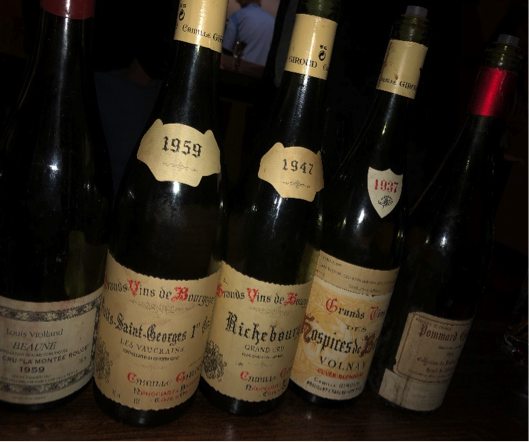“How long will my wine last?”
One of the most common questions asked by wine enthusiasts who are just beginning to collect and store quality wine.
The answers are usually vague, beginning with: Well, it depends……
Depends upon what?
- The type of grapes used in the wine
- The climate, growing and harvest conditions of the vintage (year in which the grapes were grown)
- How the wine is made
- How and how long the wine is stored
What does ‘last’ mean anyway?
Wine is a living entity which means it’s chemical components are always changing, even after it is placed in the bottle. Therefore, it has a Lifecycle, just like anything that is alive.
Only 1% of the world’s wine is intentionally made to be aged. This leaves 99% of the wines available for purchase should be consumed within 5 years of bottling. Sometime after that, the chemical balance that makes the wine enjoyable will begin to break down.
Chemical balance of wine:
High quality, enjoyable wine is balanced in smell and taste. This means that not one of the components – Sugar, Acid, Tannins (bitterness) and Alcohol – stand out unusually from the others. They are all integrated.
Ageable varietal grapes:
Grapes that inherently have good balances of sugar, acid and tannins (from thick skins) provide the raw material for wine that can be improved with age.
Common ageable grapes are:
- Chardonnay
- Cabernet Sauvignon
- Merlot
- Riesling
- Nebbiolo (Barolo)
- Sangiovese (Chianti and Brunello)
- Tempranillo (Rioja, Spain)
- Pinot Noir
- Aglianico
Ageable Vintages:
Grapes can only have a good balance of sugar, acid, tannins if they enjoy optimum growing and harvest conditions. There are numerous ‘vintage charts’ published that rate each vintage year by type and origin of wines. There is a significant difference in ageability for even the world’s greatest wines from one vintage to the next.
Making an Ageable Wine:
The winemaking process is probably the most important factor in what makes a wine ageable. The European Community has instituted a legal quality classification system in all of their member countries which governs wine making techniques for wine based upon it’s place of origin to insure ageability.
To make an ageable wine, the grapes must be harvested quickly and by hand when the grapes are at their peak balance of acid/sugar ratio and the skins are not broken, thus letting out precious juice in the field.
The pressed juice must be macerated with grape skins long enough to introduce enough grape skin tannins into the balance. It is also common to include some grape stems in the maceration process to add even more bitter tannins.
Long periods of Oak aging (24 – 60 months) with at least some new oak barrels for both ageable white and red wines infuses the wine with more tannins and a complex earthy, smokey flavor that adds to the tannin structure needed to stand up to sugar and acid balance.
Wine made to produce alcohol by volume levels of less than 14% are ageable.
Storage of Ageable wine:
Several countries have additional legal requirements for wine rated at the highest quality to be aged in the bottle as it ‘settles’ – from 12 – 60 months.
It is common for the Producer to keep ageable wine in the bottle for at least 6 months prior to releasing it for sale.
Corks are generally used to close ageable wine because they allow a small amount of oxygen into the wine over time which helps to balance all of the wine’s components, thus a wine closed with a screwcap is not considered ageable and should be consumed shortly after purchase.
How your wine has been stored at the distributor, shipped, and time spent on liquor store shelves at room temperature can also make a great deal of difference to it’s lifecycle – cutting it short of expectations.
After it has arrived at your home, make sure that you protect your wine by placing it in horizontally on racks in a cool, dark place where you can maintain a constant temperature and humidity – preferably 55F with 70% humidity levels.
Basic Rules for Wine Aging:
If you have purchased wine for under $25/bottle it should be consumed within 3 years of purchase
Sparkling wine that has no vintage year should be consumed in the year it was purchased
Rose wine should be consumed during the year it was purchased
The following wines are known for aging potential (from 5 – 20 years):
- French wine from the Burgundy (Bourgogne) that is classified as Grand Cru or Premier Cru
- Italian Brunello di Montalcino
- Italian Barolo
- French red wine from Bordeaux – Medoc regions
- French dessert wine from Sauternes
- California – Napa Cabernet Sauvignon that has a price over $50/bottle
- German late harvest Riesling wines labeled as Spatlese or Auslese
- French wines from the Hermitage region of the Rhone Valley
- Sparkling wine from Champagne with a vintage year
- Spanish red wine from Rioja with a Reserva or Gran Reserva label
- Penfold’s ‘Grange’ Hermitage from Australia (red blend)
In many cases, your ‘non ageable’ wine will taste best somewhere between the 1st and 3rd year after purchase. A good idea is to buy several of the same bottle and open one each year to see how it is ‘coming along’. You will notice a difference in aroma and taste for the same wine in different years. At a certain point in time, the wine will become balanced, with acid, fruit and tannins all working together – no one dominating the other. At that point, it is a matured wine. Thereafter, as it ‘over matures’, one of the elements will begin to disappear and oxidation will begin to turn your wine a brown color and the taste will turn ‘nutty’ and acidic.

